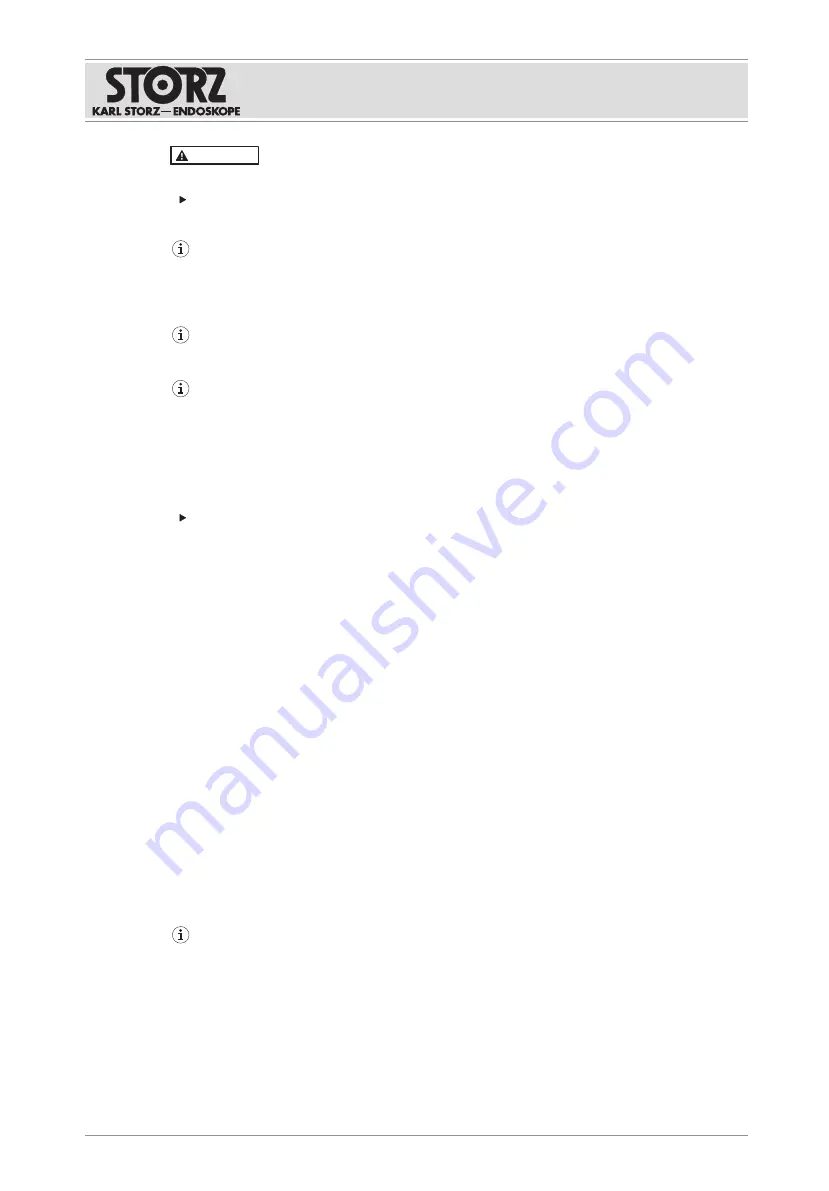
Reprocessing USA and Canada
Instruction For Use • C-MAC
®
Video Laryngoscope 8403xxx and Connection Cable 8403X • 96076019EN-US •
V4.3
32
CAUTION
Damage to the product!
Only perform reprocessing using chemicals approved by KARL STORZ. A list of approved
chemicals can be requested from [email protected].
As a general rule, all system components 8403 xxx C-MAC
®
video laryngoscopes and C-
MAC
®
connection cable 8403 X are resistant to manual and mechanical cleaning and
disinfection. If the protective cap is not being used, then manual rinsing and drying of the
contacts may be necessary in order to ensure that functioning is not impaired.
For information on reprocessing of the C-MAC
®
monitor 8403 ZX, please refer to the
corresponding instruction manual 96076008D.
For information on reprocessing of the C-MAC
®
PM, please refer to the corresponding
instruction manual 96076020D.
8.3 Brushing the surfaces
Required materials:
– Brush (item no. 27652)
Clean the surfaces of the product under running cold water with a brush.
8.4 Water Quality Requirements
Utility water
Water as it comes from the tap that meets specifications as defined per AAMI TIR34:2014
(Water for Reprocessing of Medical Devices). Tap water is acceptable for pre-cleaning and
cleaning of the instruments.
Specially treated water
Water that has generally been treated by a multistep treatment process (for example, carbon
filtration, softening, deionization and reverse osmosis, or distillation) to ensure that the
microorganisms and the inorganic and organic material are removed from the water. A final
submicron filtration could also be part of the treatment process. Specially treated water is
recommended for rinsing after high-level disinfection.
8.5 Pre-cleaning
1. Immediately after a procedure, at the point of use (for example, operating room), wipe the
device with a soft, lint-free disposable cloth moistened with water or diluted mild/neutral
pH enzymatic cleaning solution to remove all heavy soiling.
2. Place the device in a tray or container and transport them to the decontamination area per
your institution's policy.
If immediate cleaning is not feasible, soak the instruments in a diluted mild/neutral pH
enzymatic cleaning solution. Do not soak for longer than 30 minutes.
8.6 Manual cleaning
1. Thoroughly rinse the device using a commercial overhead sprayer nozzle with cold water
to remove all gross debris. Rinse for a minimum of two minutes.
2. Completely immerse the device in a diluted mild/neutral pH enzymatic cleaning solution
(e.g., Enzol). Keep immersed for a minimum of one minute.
















































